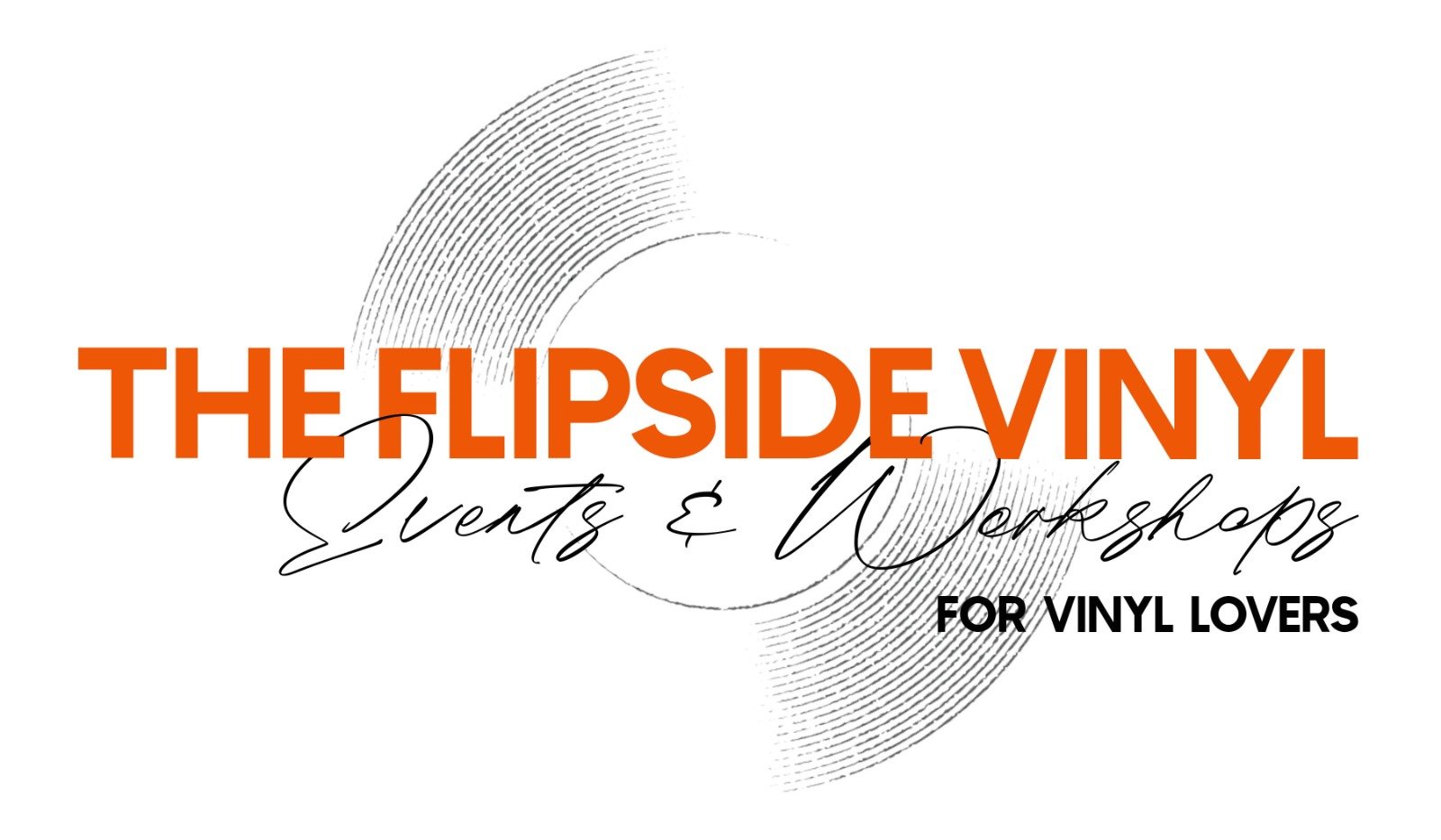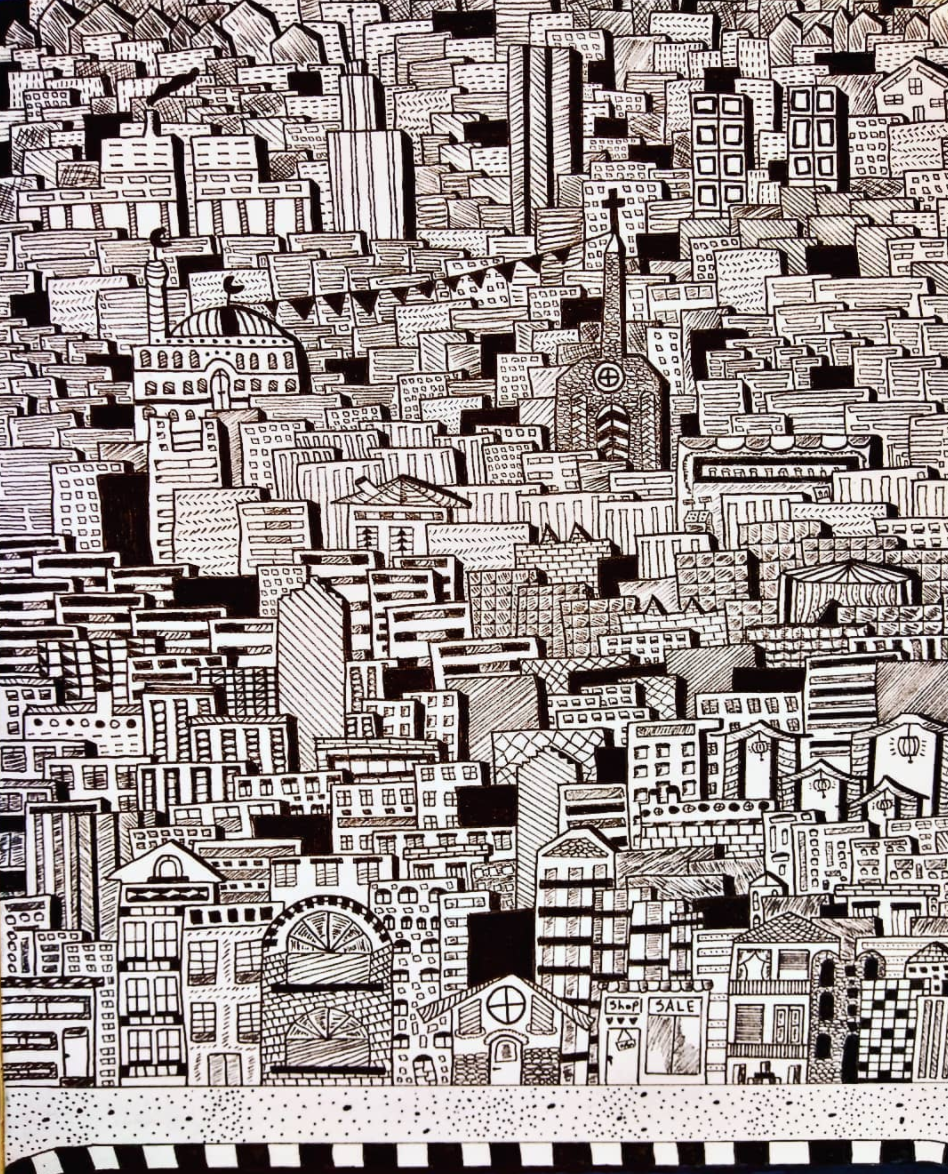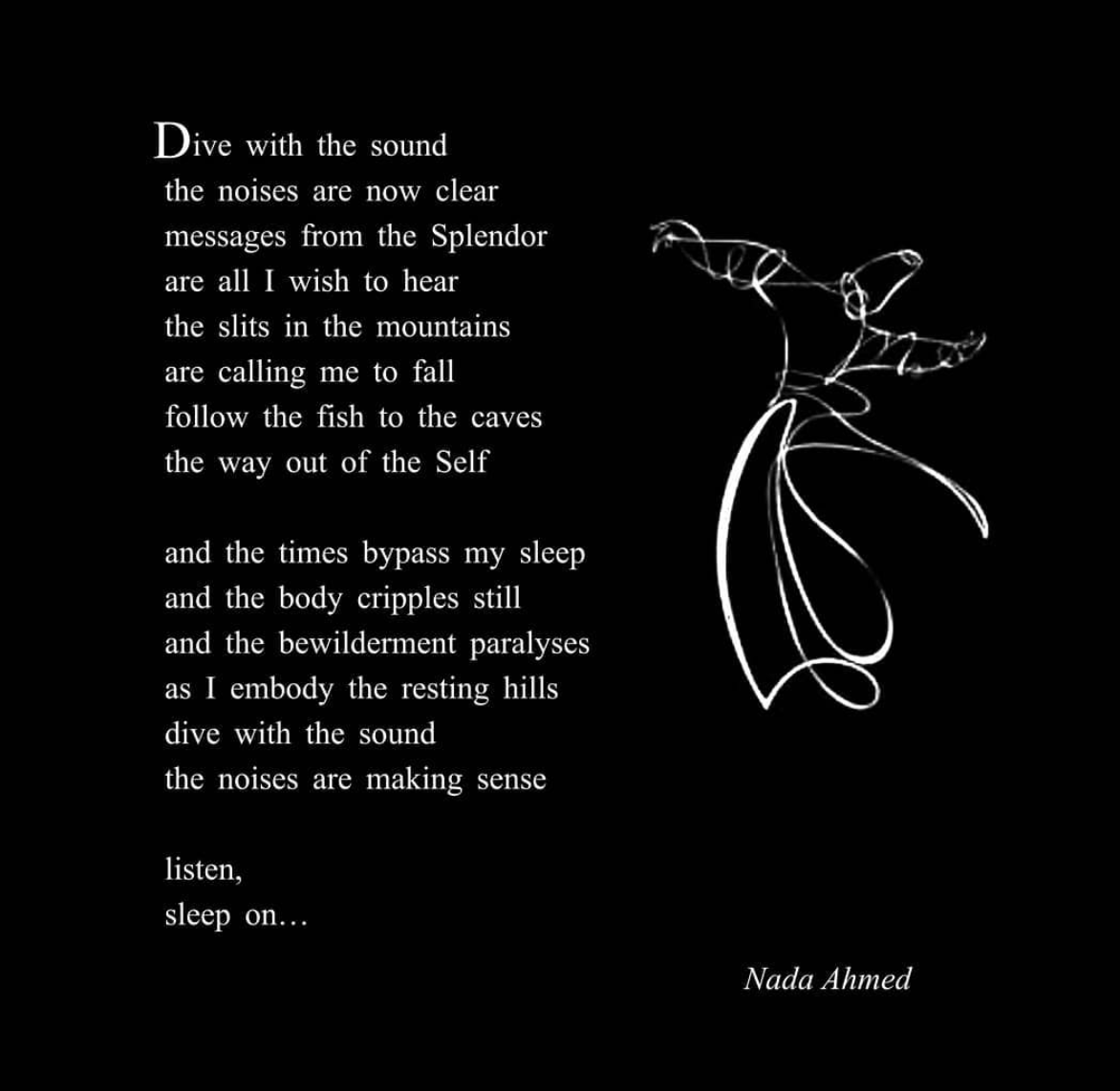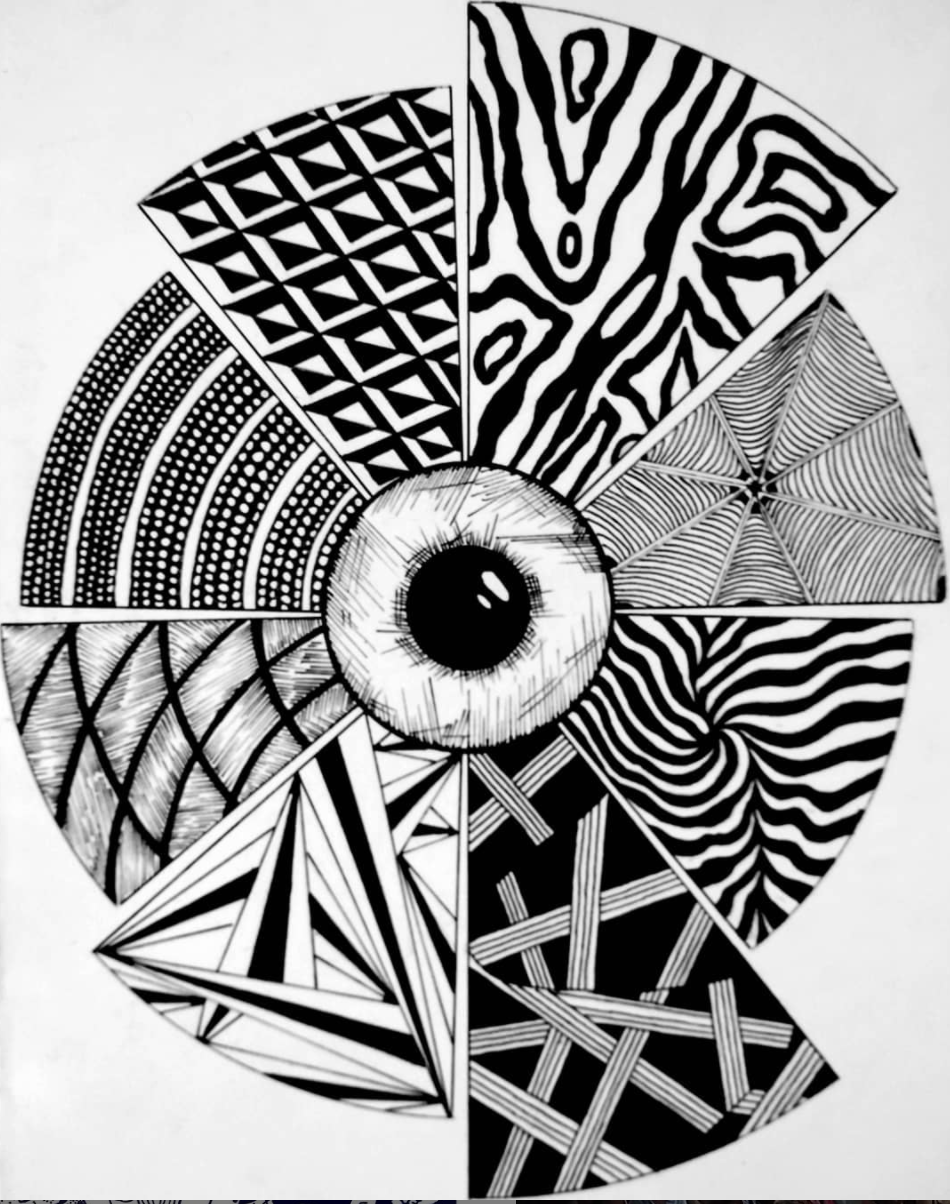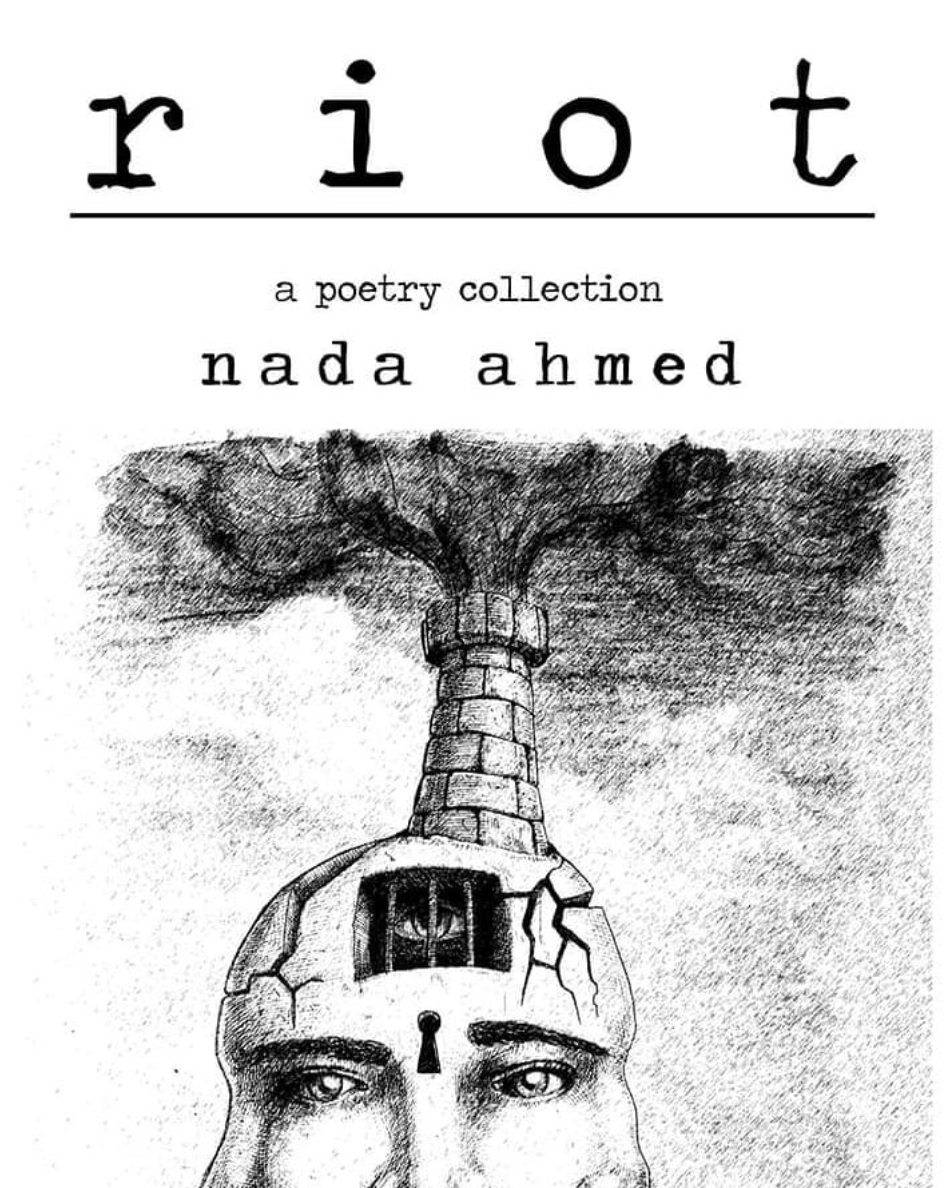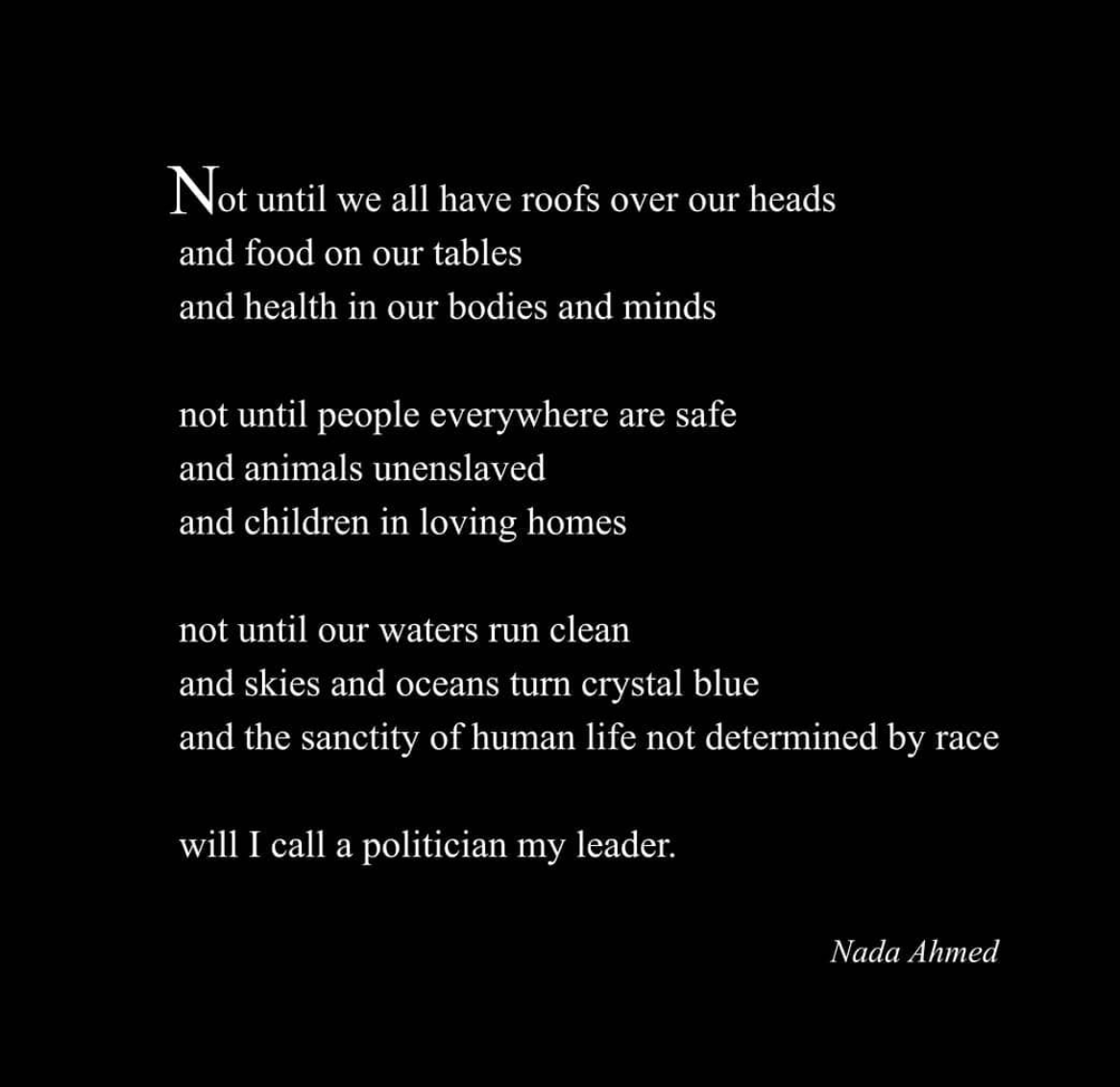5 Questions with: Nada Ahmed - February artist of the month
Nada is an Egyptian poet and an inspiring Doodle artist living in France. Her writings and art seeks to document the daily endeavors of escaping the capitalistic reality and resorting to naturalism. Nada holds a Bachelor degree in English Literature & Linguistics, and has published two poetry collections. We met through our dear friend Rania in Paris last year and while enjoying al fresco picnics at Place des Vosges and Bois de Vincennes we were inspired by her story, her purpose and true artistic aura.
LG: When did you first hear your artistic calling?
My artistic calling wasn’t much of a calling, rather a growing desire to express and a means to shedding inherent social constructs. I started writing at the age of 10 by documenting my dreams. Intensive, highly-visual and symbolic dreaming is a power the females in my family were able to collectively develop and bestow upon through storytelling, rituals and spiritual guidance. I guess, I found an indecipherable drive within myself to maintain and honor this heritage, beyond its existing societal and religious implications.
The equation was difficult-- being raised in a very conservative Muslim community, especially as a woman. But I found my safe haven in daydreams and books. I was, and still am, an avid dreamer and reader. And it still fascinates me how some people can master the magic of crafting their desires and dreams into words. Writing is my medium of choice to deeply understand and fulfill this fascination.
Doodling, on the other, was a self-made challenge to overcome my fear of drawing. Art classes weren’t the most pleasant school experience.. As students, we were forced to sit down for 90 minutes twice a week to draw postcards on patriotism, depicting men in military uniform waving the Egyptian flag on a battlefield. The teachers offered no learning curriculum or references, and would grade us based on the quality of our coloring materials.
I was put off drawing and painting almost all my life, because for me the access to visual expression was always associated with class. It took me years of trial and error to rid myself of this misconception, and begin to see art as a fundamental human practice done in response to our different but common realities. Working with indigenous communities in the south of Egypt inspired me to dig deeper into the use of minimalist, pattern-based, nature-fused urban art. It was incredible to see in real life how people could make pigments out of sand and stones, and create art so simple yet so lively and in tune with the landscape. If you look at any native African art, it mostly consists of plain lines and geometrical shapes. It hit me then: this is the kind of art I could relate to.
I spent some years observing and sketching, but my first actual trial to doodle was during the first confinement, and only a week after I arrived in France. I sat myself down at a desk with a bottle of wine, a piece of paper and a marker pen, and I haven’t stopped ever since.
LG: Your art and poetry can be both political and social. Did you always aim to send a strong message or did it morph into this because of your life experiences?
It’s a bit of both. The inspiration often comes purposelessly; I find myself seeing words and patterns everywhere, especially in nature. Yet, in the back of my mind, the human condition and the philosophy behind it are my point of interest.
Most of the things I intend to create are initially an invitation for me to be less self-critical and more capable of coping with the dreadful business that is a human experience, but it’s also an invitation for others to bring awareness into the domain of subconscious thought and emotion.
My art usually starts small, with a single line or a visual memory that I need to put on a paper. But it takes me a lot of discipline and practice to actually sit down and create. Halfway through my poem or piece of drawing I realize that it’s trying to speak something to others, something that we’re all going through but have different ways of expressing. Our collective consciousness is shaped by politics and that’s exactly the area I try to tap into.
LG: Who are your biggest influences, artistic or otherwise?
Arab writers such as Naguib Mahfouz, Nawal El-Saadawi and Mahmoud Darwish inspired me when I was young (and still do), specifically on the topics of feminism and identity. American female poets like Maya Angelou, Sylvia Plath, Rita Dove and Cherrie Moraga are some of the figures I look up to. But for some reasons, I find my biggest inspiration in 18th century English poetry and Sufist/mystic texts by Rumi and Ibn Arabi.
When it comes to doodling, I always remember my late grandma and uncle. They both encouraged this type of expression in the family. My grandma’s hands were covered in Nubian tattoos, and she was the closest person to me as a kid. My uncle was a great painter and mathematician, and taught me a great deal about life and art.
LG: Would you consider your doodle art and poetry as going hand in hand or do you see them as sending two separate and/or independent messages?
For now writing and doodling are separate mediums serving the same ideology. Finding my own voice in art is still a work in progress; I think it will always be. So I’m currently trying to focus on each medium independently, knowing that with discipline and practice they’ll eventually decide to cross paths.
I’ve already started drafting a poetry & illustration collection, but I want to give it all the time and space it needs to come to light.
LG: Do you have a message to young Egyptian girls who want to become artists knowing the possible repercussions of freedom of expression in your country nowadays?
The freedom of expression is a human core value that you must not deny yourself or others. Your greatest expression comes as soon as you recognize the art of being your true self.
Under the current political regime, it is essential to keep ourselves safe without compromising our voice and will to change.
Yet again, everything done in awareness, presence and with love is a form of art. Cooking, talking to people you love, prayers and devotion, drinking coffee while listening to your favourite music, education, taking on a job, motherhood and sisterhood, resistance and resilience are all art whose main purpose is to heal and keep up the fight.
Your art cannot be restricted; only adaptable and resilient. Find more innovative ways to deliver your message. Use whatever resources you have at hand. Indulge yourself in art and let it consume you. Allow yourself to take this time off reality, so you can return to it clearer and stronger.
You can find out more about Nada and see her work on her Instagram @nadakahmed
We’ll have her work up on the site/shop soon.
STAY TUNED!
